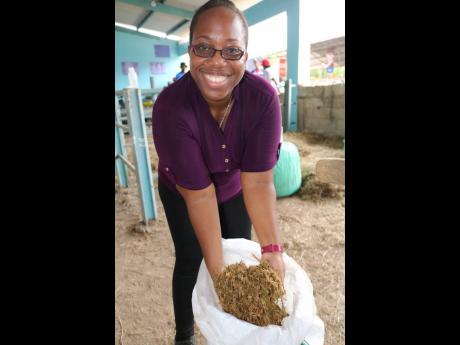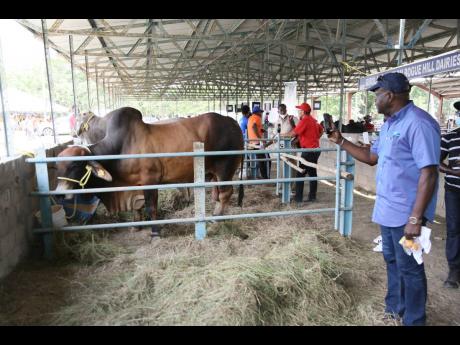Growth & Jobs | Stale cane sparks fresh business idea
WHEN THE factory that she was contracted to supply sugar cane failed to take the crop the first year, and also refused it the following year, on the grounds that it was standover (stale) cane, St Catherine farmer Patrice Crossfield-Spence stood to lose hundreds of thousands of dollars. But amid the fallout, she was able to avert a crisis when she came up with a plan to cut the cane and sell it to cattle farmers as animal feed.
Devcal Farms, in the neighbouring parish of Clarendon, was one of her first customers and by the time she came up with the idea to mix the cane with grass and promote it as fresh cattle feed, the farm was already sold on the product and was prepared to up its orders. Since then, Crossfield-Spence has partnered with Devcal Farms and Feeds International to produce more of the feed, which she showcased at this year’s Denbigh Agricultural, Industrial and Food Show in May Pen, Clarendon.
The feed is currently offered in two options: freshly cut, which is a mixture of cane and grass that must be fed to the cattle within two or three days for them to derive the maximum benefits; and the second option is called ‘silage’, which is a compressed mixture of sugar cane cuttings and grass that is first wrapped in biodegradable rope and then encased in airtight plastic in 50-kilo alotments.
After the mixture is packaged, it is allowed to ferment for at least 21 days before it is ready to be fed to the animals. As long as the plastic wrapping is not broken (punctured or otherwise compromised), it can last up to 18 months in storage. After the package is opened, all the feed must be used up to prevent spoilage.
At $10,000 for a 10-ton truck, or $700 per bag, and a bale of silage going for $1,600 each, Crossfield-Spence’s natural feed is a bargain.
The farmer-innovator explained that the natural feed is very basic, with little or no processing at this stage, but is an excellent energy supplement for livestock. However, she intends to expand her offering through a partnership with Devcal Farms and Feeds International to develop a range of customised feeds for young, nursing, lactating, dairy and beef cattle.
Getting the formulas right is most important, according to research scientist and consultant in pasture and animal production, Dr Dinsdale McLeod, who has done groundbreaking research in this area.
“You have to be aware which class of livestock you are feeding and customise it to suit them. Whether it is young animals, lactating animals or beef animals, you have to tailor the intake characteristics of the feed in order to ensure maximum digestibility. It is very important that the animal likes the feed, because animals feed by a process called voluntary food consumption, and you can’t stuff the food down their throats or force-feed them.
“Then you must factor in the class of stock for which the feed is intended, because the material that is fed to a lactating animal [is different from] the feed that is given to an animal that is being bred for muscle,” he told The Gleaner.


